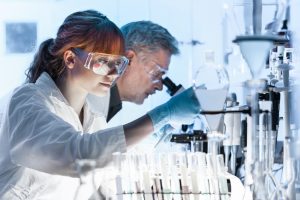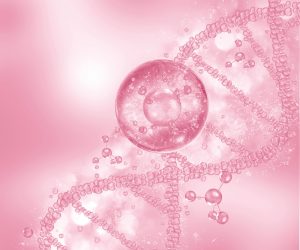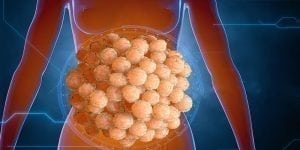New research describes the science behind a promising technique to treat infertility by turning a skin cell into an egg that can produce viable embryos. This technique could be used in women of advanced age or those who are unable to produce viable eggs due to previous cancer treatment or other reasons. It also opens up the possibility of men in same-sex relationships having children who are genetically related to both parents. The study was published in the journal Science Advances.
Technique That Results in Embryos With Chromosomes From Both Parents
Researchers at OHSU (Oregon Health & Science University) documented in vitro gametogenesis (IVG) in a mouse model through the preliminary steps of a technique based on transferring the nucleus of a skin cell into a donated egg cell whose nucleus has been removed. In experiments with mice, the researchers induced the skin cell nucleus to reduce its chromosomes by half so that it could then be fertilized by a sperm cell to create a viable embryo.

Instead of trying to differentiate induced pluripotent stem cells (iPSCs) into sperm or eggs, OHSU researchers are focusing on a technique based on somatic cell nuclear transfer, in which a skin cell nucleus is transplanted into a donor egg cell that has had its nucleus removed. In 1996, researchers in Scotland used this technique to clone a sheep called Dolly. In this case, the researchers created a clone of a parent.
In contrast, the OHSU study describes the result of a technique that leads to embryos with chromosomes from both parents. The procedure involves three steps: The researchers transplant the nucleus of a mouse skin cell into a mouse egg that has had its own nucleus removed. Stimulated by the cytoplasm – the fluid with which the cells are filled – in the donor egg cell, the implanted skin cell nucleus sheds half of its chromosomes. The process is similar to meiosis, where cells divide to produce mature sperm or eggs. This is the crucial step that leads to a haploid egg cell with a single set of chromosomes. The researchers then fertilize the new egg with sperm, a process known as in vitro fertilization. This results in a diploid embryo with two sets of chromosomes, which ultimately leads to healthy offspring that receive the same genetic contribution from both parents.
This Can Prevent Many Harmful Genetic And Epigenetic Changes
OHSU researchers had already provided proof of concept in a study published in January 2022, but the new study goes further by meticulously sequencing the chromosomes. The researchers found that the skin cell nucleus separated its chromosomes each time it was implanted into the donor egg cell. In rare cases, this happened perfectly, with one of each pair of matching egg and sperm chromosomes. The next phase of this research is to find out how this pairing can be improved so that each pair of chromosomes separates correctly.
Laboratories around the world are looking at a different technique of IVG, which involves a time-intensive process of reprogramming skin cells into iPSCs and then differentiating them into eggs or sperm. The OHSU researchers skip the entire cell reprogramming step. The advantage of this technique is that it avoids the long culture time required to reprogram the cell. Over several months, many harmful genetic and epigenetic changes can take place. Although the researchers are also studying the technique on human eggs and early embryos, they say it will be years before the technique is ready for clinical use.
All research at OHSU involving the use of animals must be reviewed and approved by the University’s Institutional Animal Care and Use Committee. The priority of the IACUC is to ensure the health and safety of research animals. The IACUC also reviews procedures to ensure the health and safety of persons working with the animals. No work on live animals may be conducted at OHSU without the approval of the IACUC.




